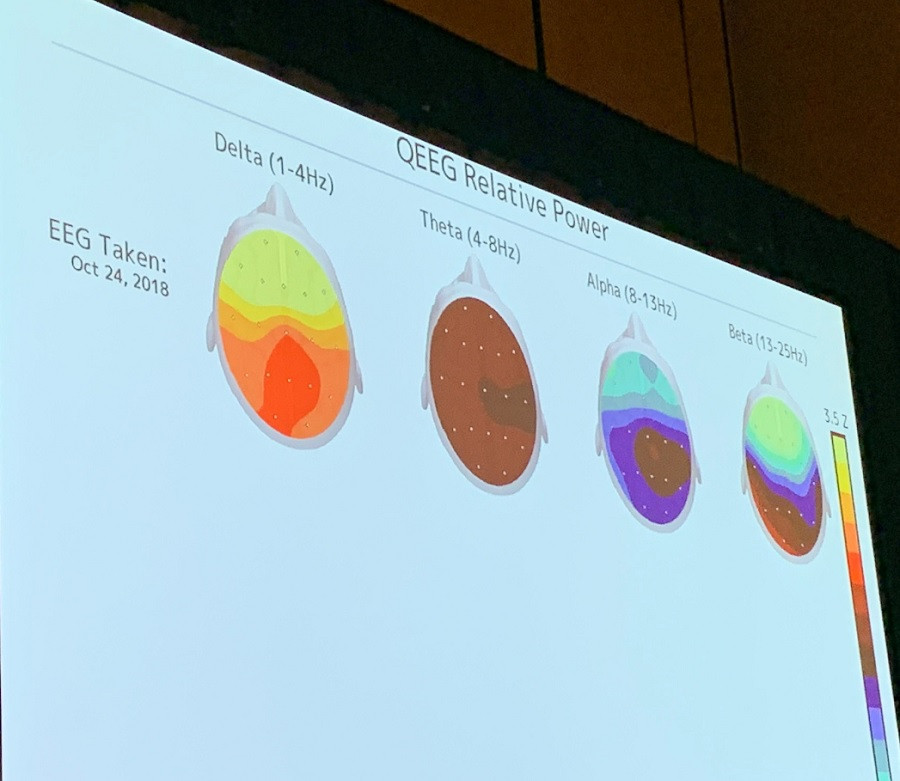VR with neural interfaces - total immersion in virtual reality

This is exactly what it seems - a hole is made in the head of Gabe Newell for an invasive electrode with a drill (actually not)
Virtual reality as a technology has been around for quite some time. Modern samples of VR-gadgets and programs do a pretty good job of fooling a person’s feelings, be it flight simulation or passing game levels. But still, such a simulation cannot be called complete - the full-fledged models described in science fiction books and shown in films are still far away.
According to some experts, to achieve full immersion in VR is possible only in one case - the use of neural interfaces. In this case, you can get rid of the controllers and control what is happening with the power of thought. In addition, in the future, it is neural interfaces that will reproduce the smell, taste, tactile sensations in the virtual world .
In the meantime, scientists are talking about a combination of non-invasive EEG-systems (they work, reading the electrical signals of the brain) with existing VR solutions. EEG helmets analyze the electrical activity of the brain and turn it into digital data. At the same time, it is already possible to evaluate the emotional state of a person (sadness, happiness, boredom) and interact with the user in virtual reality accordingly.
')

“Imagine, for example, enemies adapting to a player’s individuality in a game. Who would you like to fight against? ”Said Mike Abinder, an expert on psychology in games from Valve. "If we know the answer to this and other questions, you will get a game that will be much more exciting than all modern games."
Yes, and gamedizan can be much more adaptive. So, the films show avatars of the main characters in virtual reality, which are generated in accordance with the emotional state of the user, his age, gender, etc. All this is quite realistic and EEG can help in the development of similar systems. An avatar can exactly reproduce the player’s facial expressions and moods. All these small details will lead to the fact that the overall atmosphere of the game or any other element of virtual reality will become more realistic for the system participant.
If the process seems to the player too simple, boring, uninteresting - VR environment adjusts to a specific person and modifies the game environment so that the user is fully involved in the process.

Currently, many companies are working to achieve this goal. So, for example, startup Neurable is testing neural interfaces connected to commercially available virtual device models. There are other companies that are working on similar projects.
In order for a person to feel in virtual reality something that he feels normal in reality (a burning smell, for example, in the event of a fire), you just need to excite a certain group of neurons in the brain. And for this we need neural interfaces, which are gradually being improved. Scientists are studying the effects of various environmental factors on the human brain. If we can catch and fix the necessary patterns (and there are a lot of them), and then “reproduce”, then we can say that the person realized the Matrix.

Of course, for the realism of the same game to be sufficiently realistic, it is necessary that all the processes go quickly - so, from the thought of a shot to the very shot should not take more than 10-30 milliseconds. Only in this case, the person will be immersed in VR.
However, it’s not easy to implement. For example, the reaction of the brain to what is happening around is “washed up” by extraneous electrical signals, which are also a reaction to some other factors. “The data is very noisy, especially in the brain. There is a lot more that we just don’t understand, ”said a representative of the VR project from Valve.
Nevertheless, the process is gradually moving, technologies evolve. In a few years, perhaps we will see the first results of this work and finally be able to feel the “Depth”.


Source: https://habr.com/ru/post/446744/
All Articles